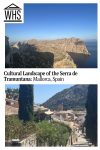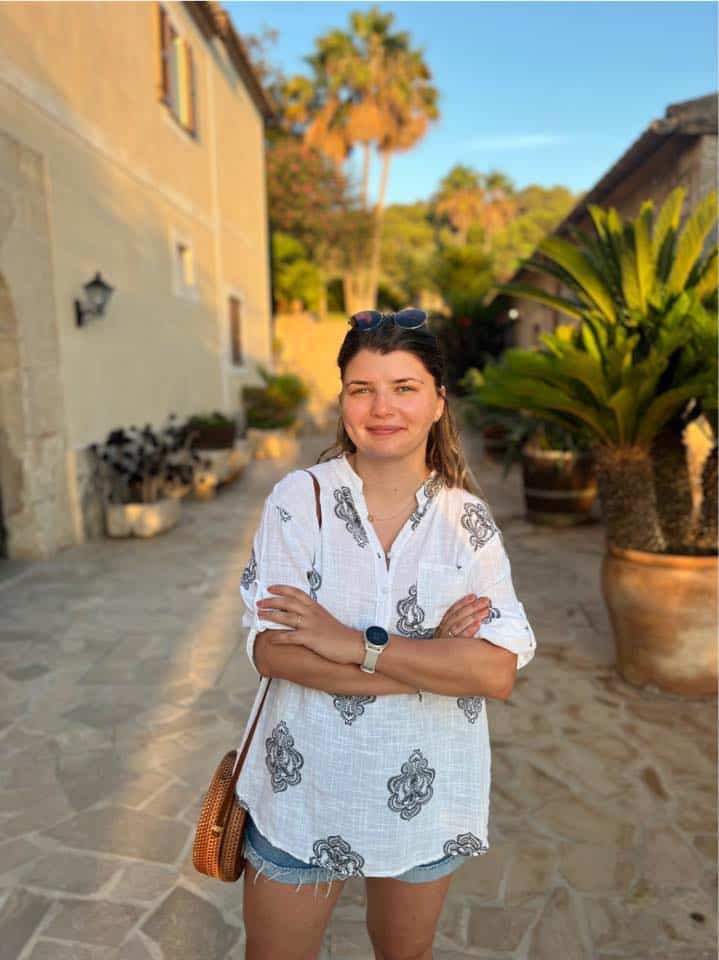Cultural Landscape of the Serra de Tramuntana
By Ersilia Octave
What is the Cultural Landscape of the Serra de Tramuntana?
The Cultural Landscape of the Serra de Tramuntana is a UNESCO World Heritage site sprawling across a mountainous area along the northwestern coast of Mallorca in Spain’s Balearic Islands. Inscribed in 2011, it’s a breathtaking testament to centuries of human ingenuity working in harmony with nature.
The first time I laid eyes on the Serra de Tramuntana, I almost forgot I was in Mallorca! While most visitors flock to the island’s beaches, this mountain range reveals Mallorca’s soul.
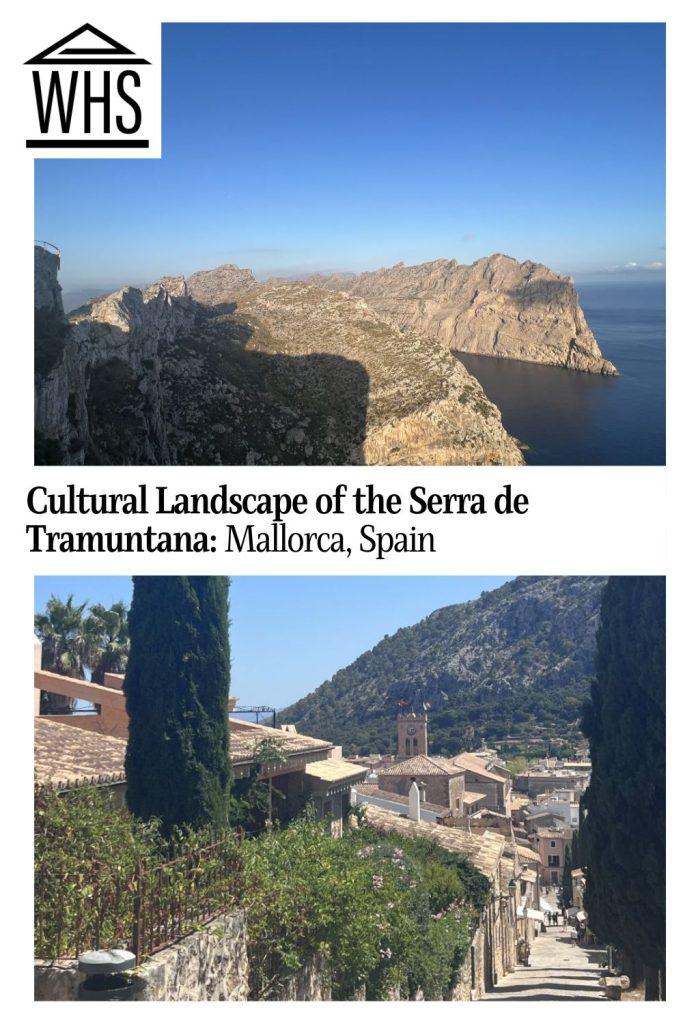
Disclosure: This article contains affiliate links. Making a purchase through an affiliate link will mean a small commission for this website. This will not affect your price. Privacy policy.
What makes this place special? The ancient agricultural terraces carved into steep mountainsides, ingenious water management systems that have functioned for centuries, and charming traditional villages that seem frozen in time.
The Serra occupies about 90 kilometers (56 miles) from Andratx in the southwest to Cap de Formentor in the northeast, covering nearly a third of the island!
Why is the Cultural Landscape of the Serra de Tramuntana a UNESCO World Heritage site?
The Serra de Tramuntana earned its UNESCO status because it perfectly embodies how humans and nature can create something extraordinary together. It also represents an interchange of cultures: in this landscape the Arabic techniques of water harvesting were combined with the knowledge of agriculture brought by the Christians when they conquered the island in the 13th century. Over centuries, an intricate system of terraces, waterworks, and settlements developed.
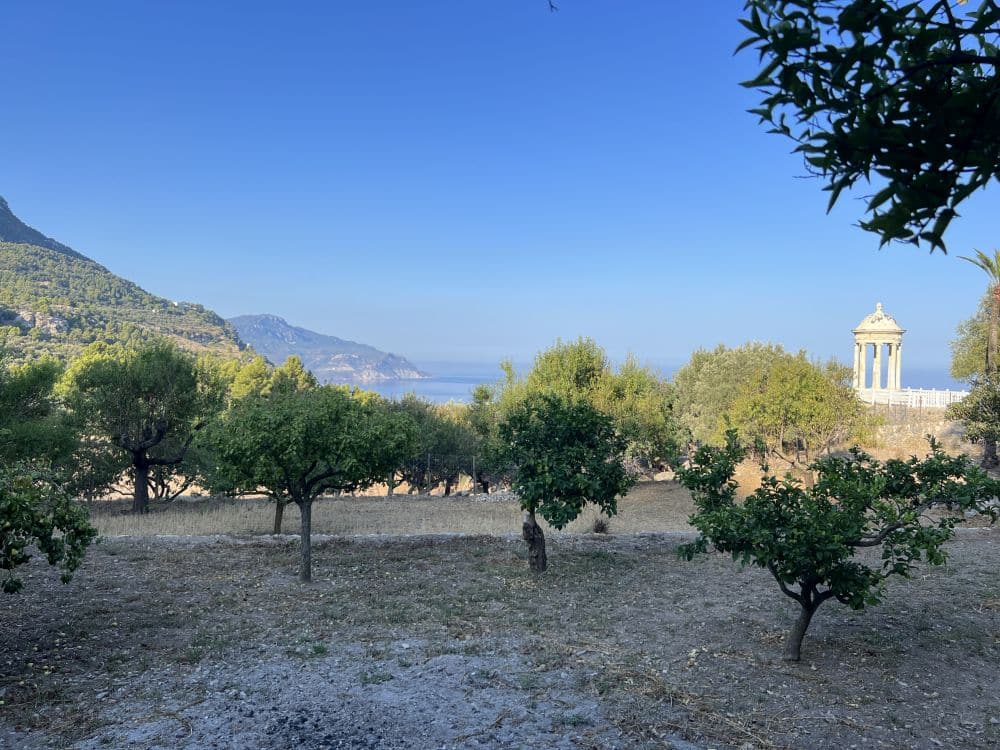
According to UNESCO, “Millennia of agriculture in an environment with scarce resources has transformed the terrain and displays an articulated network of devices for the management of water revolving around farming units of feudal origins.”
In the Serra de Tramuntana, stone walls, olive groves, and ancient pathways tell the story of generations adapting to and enhancing their surroundings.
What can you expect on a visit to the Serra de Tramuntana?
Forget everything you thought you knew about Mallorca! This is the island’s authentic heart, far from the busy beach resorts. The scenery literally took my breath away — terraced slopes that climb like giant staircases from the Mediterranean Sea to the mountain villages. On one side, you have dramatic limestone mountains reaching over 1,400 meters high (4,600 feet); on the other side you have the blue sea with its impressive cliffs.
There are multiple villages scattered throughout the mountain range. They make a visit even more spectacular.
I spent a morning wandering through Deià‘s narrow streets, following a path down to its pebbly beach while surrounded by UNESCO-protected landscape. The walk from Deià village to its beach is the perfect introduction to the Serra’s charms — not too challenging but rewarding at every turn!
Villages like Valldemossa, with its famous monastery where Chopin once stayed, feel like living museums. The traditional stone houses with their green shutters against the mountain backdrop create postcard-perfect scenes around every corner. And the morning light hitting the terraces? Pure magic for photographers!
Try this guided daytrip, which stops in both Soller and Valldemossa. This daytrip includes stops in Soller, Deià and Valldemossa.
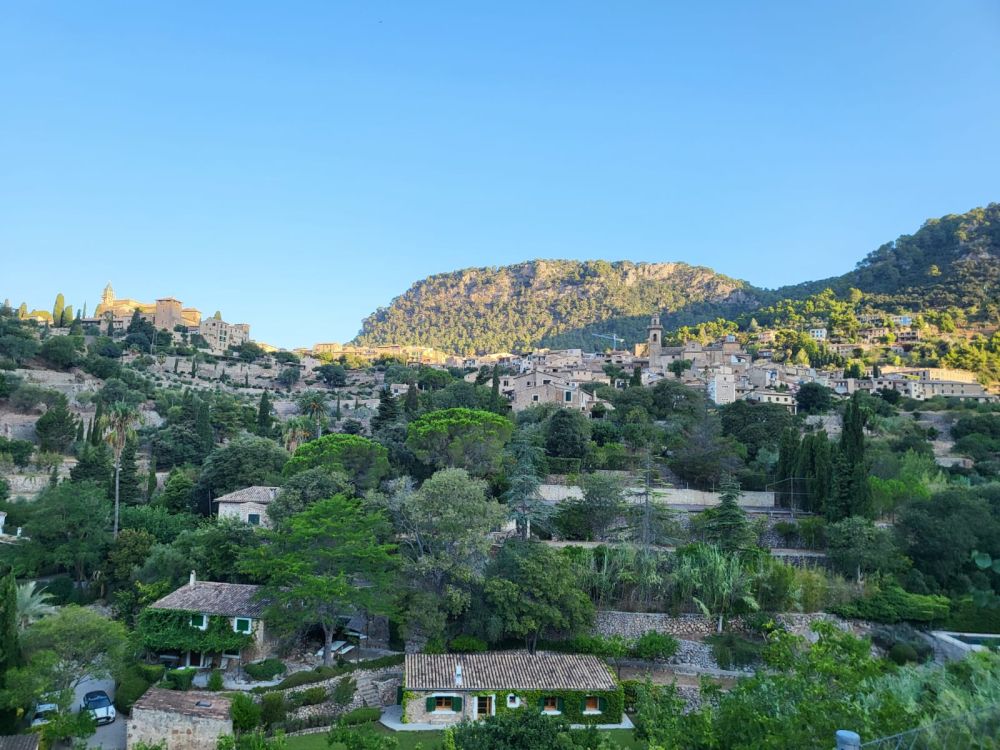
Is the Cultural Landscape of the Serra de Tramuntana worth visiting?
YES! This is hands-down one of the best parts of Mallorca and absolutely deserves a spot on your itinerary. I’d actually plan my entire trip around it! The combination of beautiful scenery and authentic village life offers something completely different from the beach experience most visitors seek.
While Deià and Valldemossa get most of the attention (for good reason!), don’t overlook Pollença in the northeast. It’s less crowded but equally charming, with its Roman bridge and historic streets. And the terraced landscapes of Banyalbufar? They’ll have you filling up your camera memory in minutes!
All these villages make for great bases to stay in and enjoy several days of the Serra de Tramuntana mountains.
What sorts of travelers would like the Serra de Tramuntana?
This UNESCO site is perfect for travelers who want to see the authentic part of Mallorca and don’t mind a bit of physical effort to find it. Those who love history and historical sites will be fascinated by the centuries-old water systems and traditional building techniques. Nature lovers will be in heaven with the diverse landscapes and stunning viewpoints.
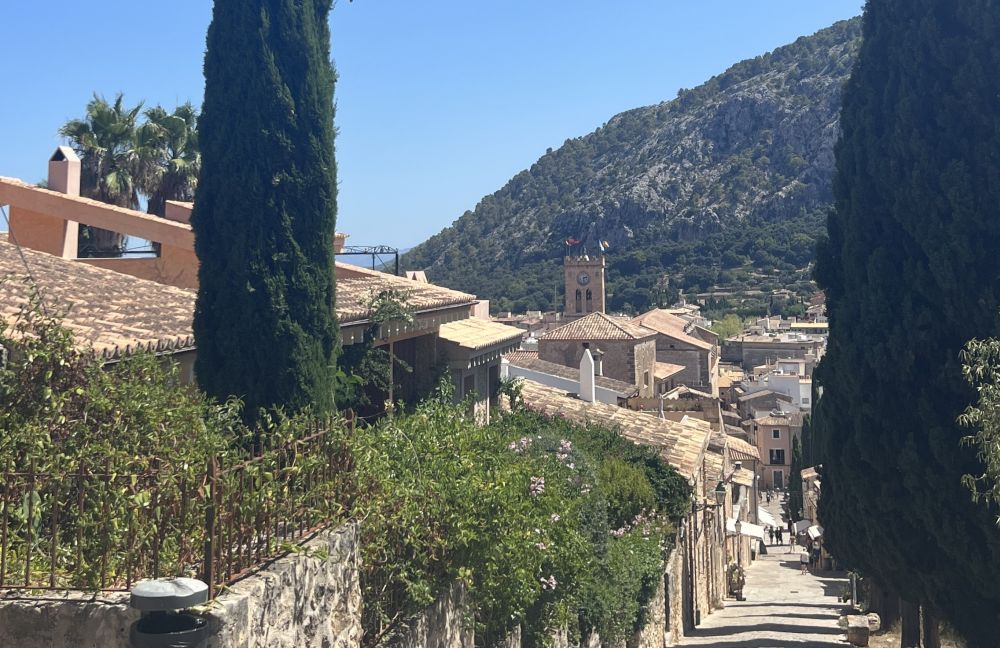
You just have to know that these villages are built on slopes (That’s part of their charm!), so expect lots of stairs and inclines. Pollença even has its famous 365-step stairway to a chapel. If mobility is an issue, some areas might be challenging to navigate.
The Serra is also paradise for active travelers. Professional cyclists make it a personal challenge to take the mountain roads (you’ll see them everywhere), and hikers can choose from countless trails with spectacular views. The famous Dry Stone Route (GR221) runs through the entire mountain range for the truly adventurous.
This guided hike takes you up the second-highest peak in the Serra range.
Tips for visiting the Serra de Tramuntana
If you’re visiting in summer (like I did), get an early start to beat both the crowds and the heat. I arrived in Valldemossa at 7 AM and there were already visitors there. By 8:30, when I returned to my car, the parking lot was completely full and tour buses were arriving (This was in August). Deià gets even more crowded, being more popular, so plan accordingly.
Pollença is a bit easier to visit since it’s less famous and slightly off the main tourist path. Banyalbufar is even more of a hidden gem, with terraced fields that drop dramatically to the sea.
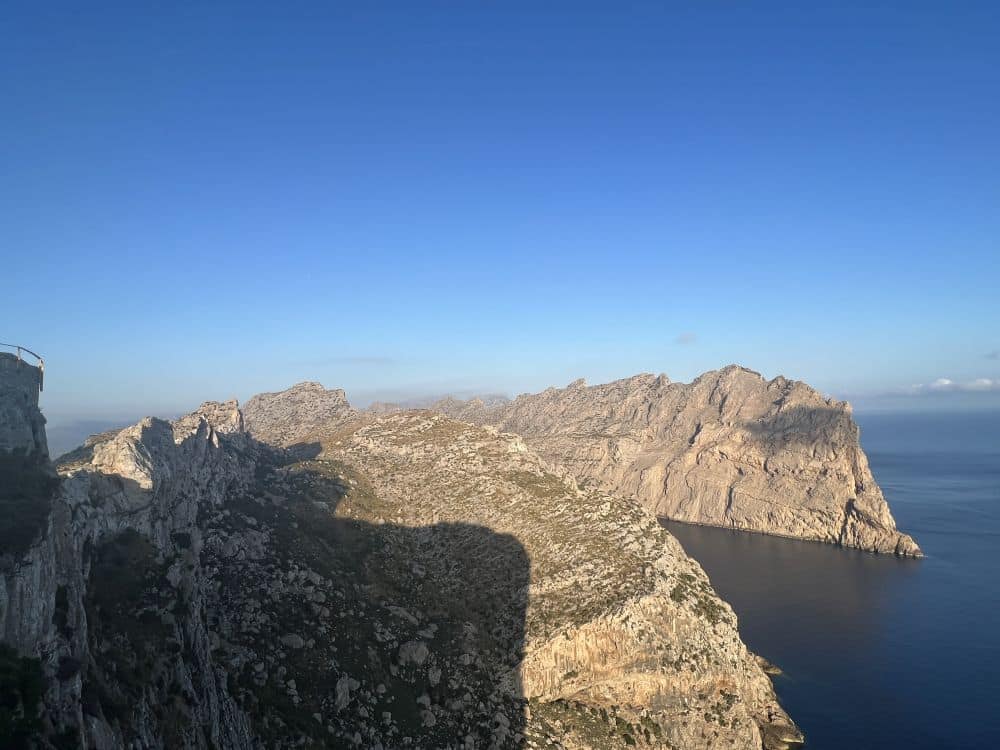
For Cap de Formentor — possibly the most spectacular part of the entire range — you have three options during summer: drive there before 10 AM (restrictions apply after that), take the public bus, or join a guided tour. I recommend the early morning drive to catch sunrise from the lighthouse — one of my most memorable Mallorca moments!
This 3-hour tour to Formentor is timed so that you can catch the sunset.
For the best experience of the entire mountain range, base yourself in Sóller, Fornalutx, or Pollença. I spent several days in Sóller and could have easily stayed longer — the perfect place for exploring the Serra. For an authentic stay, choose a traditional farm stay.
Find accommodations in Sóller, Fornalutx, or Pollença.
For these walks, good walking shoes are absolutely essential! Those charming cobblestone streets and ancient pathways aren’t kind to fancy footwear.
If you’re going to visit Menorca as well, there’s another UNESCO site there: Talayotic Menorca, with several different sites.
Where is the Cultural Landscape of the Serra de Tramuntana?
The Serra de Tramuntana runs along the entire northwestern coast of Mallorca, from Andratx in the southwest to Cap de Formentor in the northeast.
By car from Palma de Mallorca (the island’s capital), you can reach Valldemossa in about 25 minutes, Deià in 45 minutes, Sóller in 40 minutes (through a tunnel, toll required) or 50 minutes (via the scenic mountain road), and Pollença in about an hour. Parking is available in all villages but fills up quickly in high season — and is rarely free in the most popular spots.
Compare rental car prices in Mallorca.
Public transportation is charming but limited. The vintage wooden train from Palma to Sóller is an attraction in itself, cutting through the heart of the Serra in about an hour of scenic travel. From Sóller, you can continue to Port de Sóller on an equally charming tram. Buses connect Palma to the main villages, but schedules can be infrequent.
For the full Serra experience, I strongly recommend renting a car. The freedom to stop at viewpoints, explore hidden corners, and travel at your own pace is invaluable in appreciating this diverse landscape.
For more information about the Cultural Landscape of the Serra de Tramuntana, its attractions and visitor facilities, see its official website.
Have you been to Mallorca and visited the Serra? If so, do you have any additional information or advice about this UNESCO World Heritage site? Please add your comments below!

